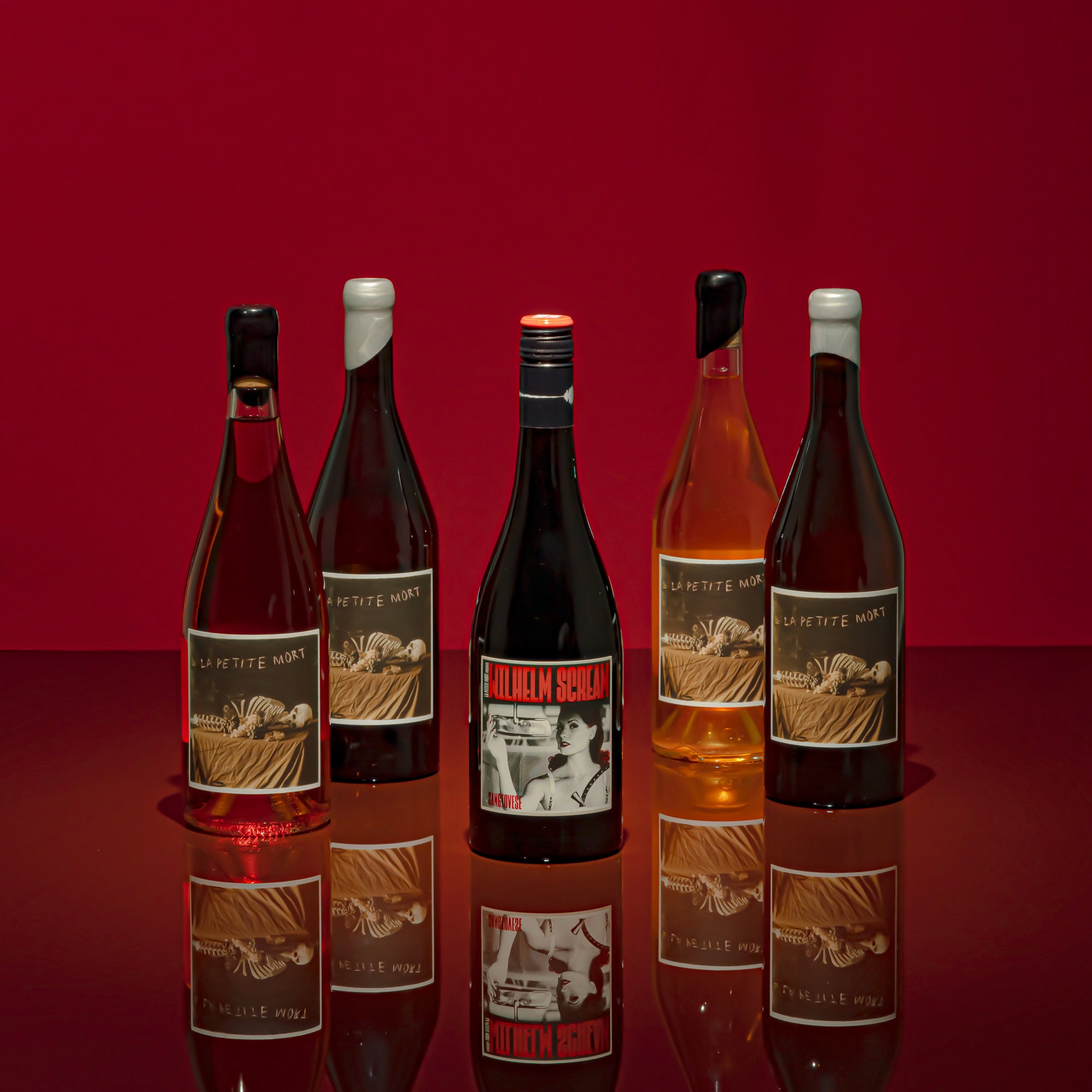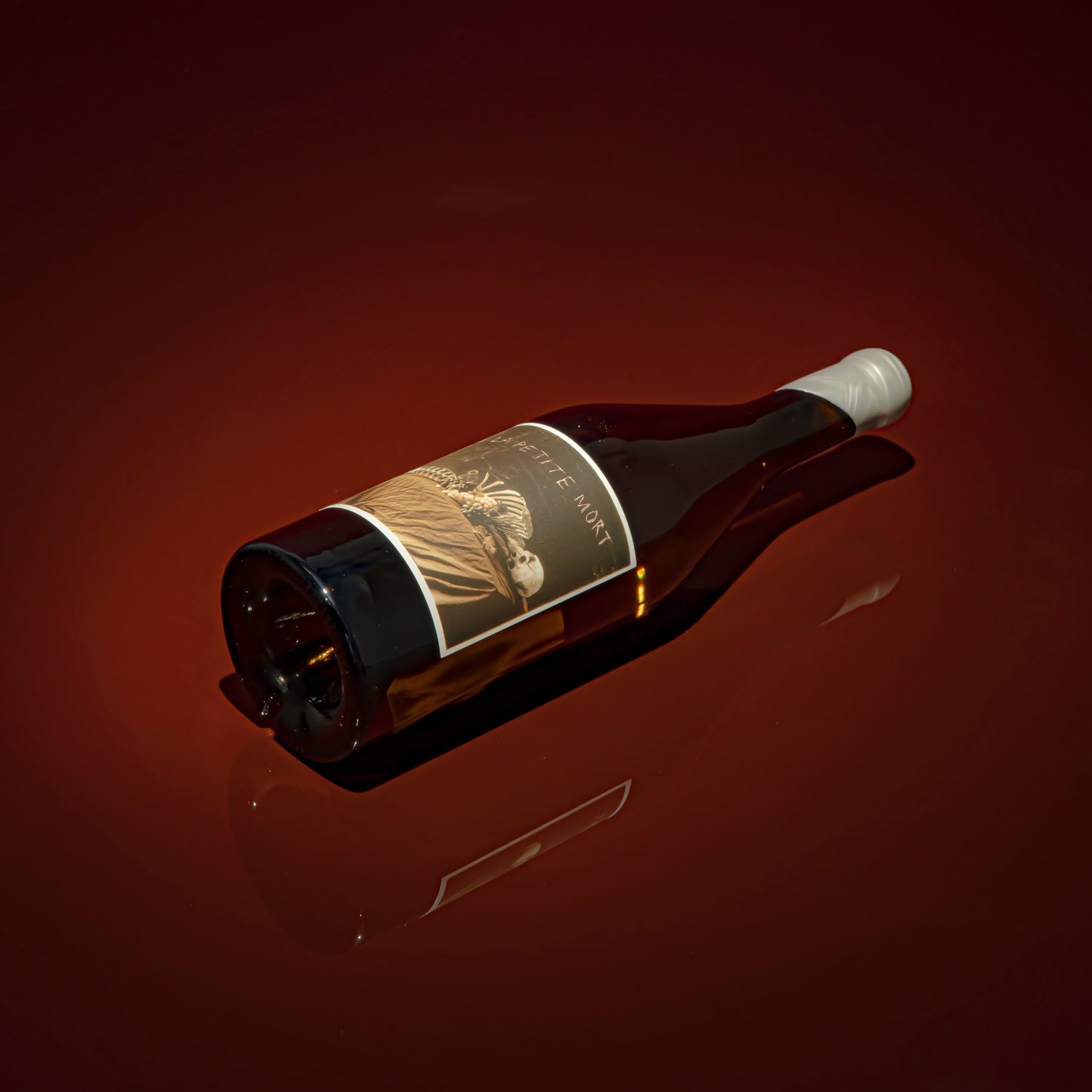La Petite Mort

La Petite Mort, or Little Death in French, is not your average lineup of wine. Unusual and experimental. Left of field and small batch. This exploratory project from Glen Roberts and Andrew Scott is often plugged into the experimental box, but their winemaking styles and techniques are borrowed from history's past. “Most of my so-called experimental wines are based on styles and techniques that are rooted in history as opposed to being ground-breaking or pioneering.” These winemakers are utilising tools and methods that were invented thousands of years ago, used to make some of the first wines of the world.
Expect the unexpected
Their gothic bottles, complete with skeleton and blackened grapes, allude to the unexpected wine within. Bending the rules, it seems, produces a distinctive result. Wines that surprise and pop with the unexpected.
But these unconventional makers weren’t always tending to organic vines and tinkering with terra cotta pots. Before La Petite Mort, Glen was a medical research scientist, while Andrew, on the other hand, was deep in the world of hospitality working as a sommelier. Oh, and an occasional ski instructor. Under the tutelage and guidance of hospo guns (including Jauma’s formidable James Erksine) Andrew decided to set skiing to one side.
After winemaking stints across Australia, he found the Granite Belt and eventually became assistant winemaker at Bent Road Winery. Thus was born their new, left of centre wine project.
Emulating traditional Georgian winemaking, Andrew uses ancient terracotta amphora, called Qvevri, dating back 8 thousand years.
But these unconventional makers weren’t always tending to organic vines and tinkering with terra cotta pots. Before La Petite Mort, Glen was a medical research scientist, while Andrew, on the other hand, was deep in the world of hospitality working as a sommelier. Oh, and an occasional ski instructor. Under the tutelage and guidance of hospo guns (including Jauma’s formidable James Erksine) Andrew decided to set skiing to one side.
After winemaking stints across Australia, he found the Granite Belt and eventually became assistant winemaker at Bent Road Winery. Thus was born their new, left of centre wine project.
Emulating traditional Georgian winemaking, Andrew uses ancient terracotta amphora, called Qvevri, dating back 8 thousand years.
These large clay vessels are buried underground, where the cool temperature of the earth emulates a fridge, slowing down fermentation and subsequently building flavour profiles. These conditions allow the ferment to sit on skins for longer periods of time, gaining all kinds of textures.
Their Granite Belt winery is one of Australia’s highest vineyards, which also means it’s one of the coolest. Every now and then, a smattering of snow covers their dormant winter vines. Free from the expectation that comes with prominent wine regions — for instance, the Barossa Valley making bold, brooding Shiraz, or Beechworth producing citrusy Chardonnay — the Granite Belt sits on the fridge of winemaking. This anonymity lends itself to alternative ways of approaching winemaking.
Intriguingly complex wines with a story to tell, and thousand year old methods, renewed and relevant. Expect the unexpected.
Their Granite Belt winery is one of Australia’s highest vineyards, which also means it’s one of the coolest. Every now and then, a smattering of snow covers their dormant winter vines. Free from the expectation that comes with prominent wine regions — for instance, the Barossa Valley making bold, brooding Shiraz, or Beechworth producing citrusy Chardonnay — the Granite Belt sits on the fridge of winemaking. This anonymity lends itself to alternative ways of approaching winemaking.
Intriguingly complex wines with a story to tell, and thousand year old methods, renewed and relevant. Expect the unexpected.

“Most of my so-called experimental wines are based on styles and techniques that are rooted in history as opposed to being ground-breaking or pioneering.”